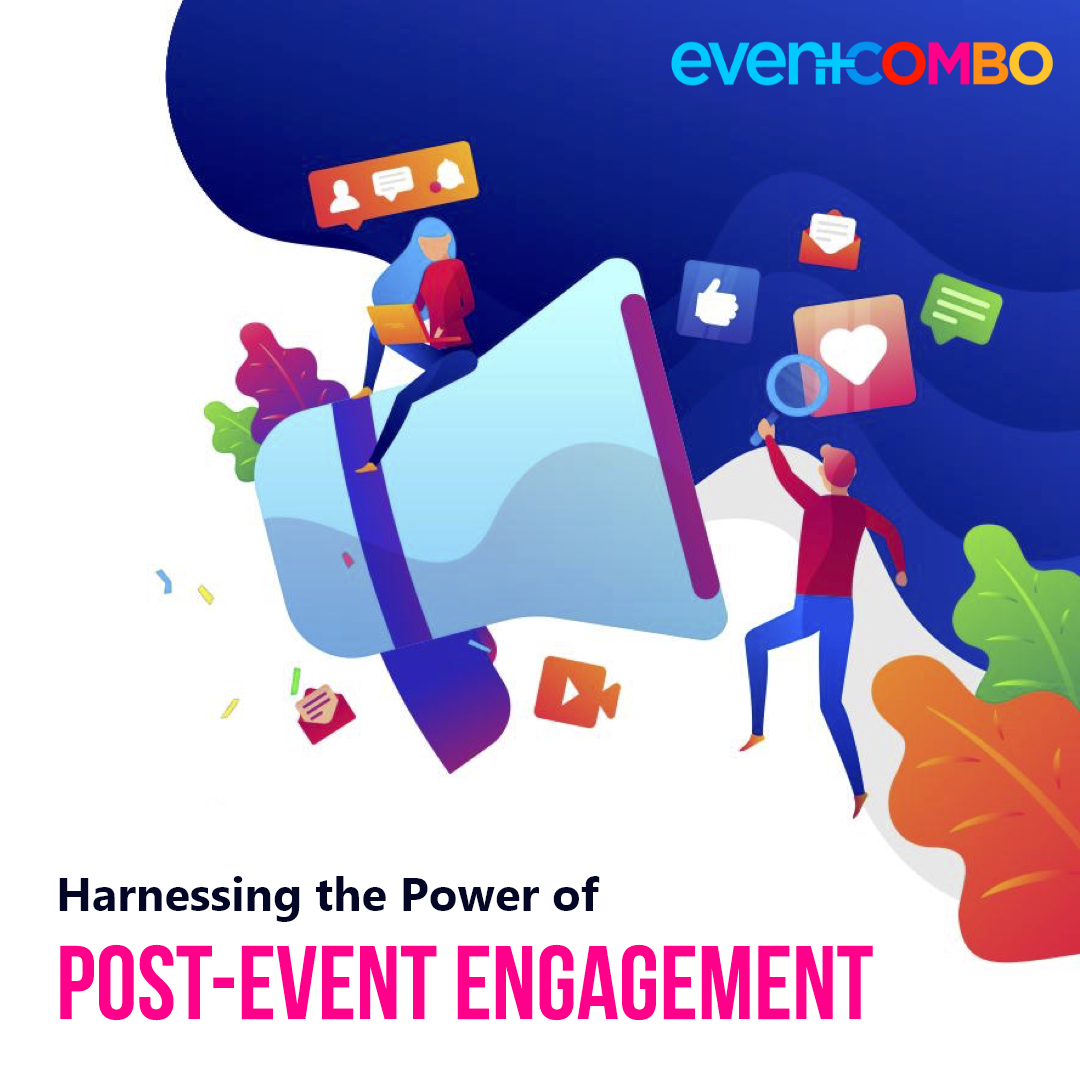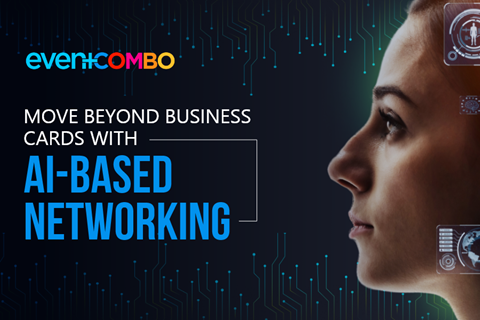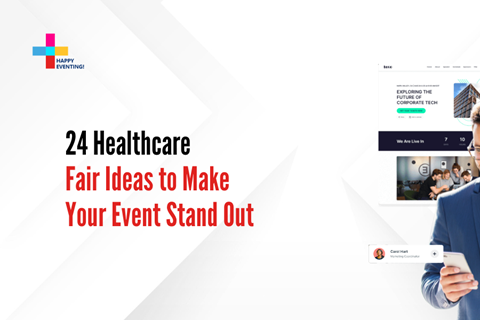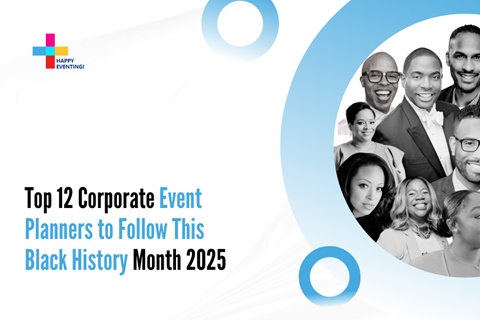

A successful event requires more than just financial investment; it demands careful planning, strategic thinking, strong partnerships, and a host of other intangible elements. Unlike a straightforward report card, an event's success isn't immediately measurable the moment attendees leave or log off. While instant analytics from event tech provide some insights, true success metrics unfold over time, sometimes indefinitely. And this ongoing impact makes post-event engagement crucial. So, why not capitalize on it to sustain momentum and maximize your event's long-term success?
In this blog, we will discuss how post-event engagement can be a tool to unleash remarkable results.
What Is Post Event Engagement and Why Do You Need It?
Post-event engagement allows you to maintain and strengthen your relationship with attendees. Creating a community of people who consistently participate in your events can lead to increased brand awareness, as they become vocal advocates of the great experiences you deliver. By effectively engaging with attendees after the event, you indirectly contribute to brand building.
Moreover, post-event engagement helps you refine future experiences. The activities and strategies involved provide invaluable and unbiased feedback about your event. This feedback can also be used to optimize budgets and measure ROI. Post- event engagement makes attendees feel valued and heard. Strategies such as surveys, access to exclusive content, follow-up emails, and thank you posts encourage them to share their thoughts and opinions. All of this demonstrates that your event was not just a marketing effort, but a genuine attempt to connect with and care for your audience.
When done correctly, post-event engagement is your gateway to forging long-term relationships with your target audience.
Kicking-off Post-Event Engagement Strategy
The most voted reason that weakens a post-event engagement strategy is failure to get all stakeholders on the same page during the event planning stage. The marketing team, organizers, sponsors, and everyone else involved in decision-making should have their priorities and goals aligned with post-event campaigns. Standing on common ground beforehand is essential to develop result-driven and engaging post-event drip campaigns, with a prime focus on establishing long-term connections with attendees.
Another essential consideration is having a clear understanding of your post-event objectives. Whether you organized the event to generate leads, nurture identified buyers, educate the audience, or build brand loyalty, your post-event engagement campaigns should revolve around your goals.
How to Maximize Post-event Engagement - Most Effective Strategies
Without delay, let's take you through ideas and proven methods to strategize your post-event engagement and harness its power to make a deeper impact on your audience, deep enough to ensure they stick with you even after the E-day!
1. Post-Event Communication
A) Thank You Emails: If engaging the audience was as easy as a simple thank you email, we wouldn't be even writing this blog! Every engagement strategy is to be customized and planned in bite-sized elements to make them actually work.
Sending out Thank You emails is an obvious start, but they must be customized with an engaging CTA based on the following buckets.
B) Follow-up Emails: Follow-up emails must be very purposeful, highly engaging, and value-adding. This is also your chance to get creative and integrate social media. Share pictures clicked during the event and ask them to reshare on LinkedIn. Alternately, send a discount code/voucher based on preferences shared during event registration. These micro settings increase the chances of them returning to the next event.
If your event divulged lots of information, there is a fair chance the audience is yearning for more. Share more information and resources related to your product/service/topic. You can later follow up with more engaging emails, containing videos, tutorials, and as the last thread, a we-miss-you-and-can't-wait-to-see-you email for registering for your next event.
It is significant to note that every bucket we are discussing here can have a quick survey to get more details of prospective attendees (which would also help you plan for your next event).
2. Fragmentize Your Event Content
A) Post-Event Landing Page: A post-event landing page summarizes the key highlights of the event. You can post pictures or videos, allowing attendees to relive the experience. Including elements like recap videos, slides of event content, names of award winners, and fun statistics with a musical backdrop can make the page more engaging. Offer downloadable materials and interactive features like forums and polls to spark engagement. If you hosted a virtual event, include a content library with limited access for nurturing leads who want to engage but are short on time. Don’t forget to share this page on your social media channels.
B) Social Media: Give a sculpted view of the event gone by through social media channels. The drip is the same - thank you posts, creating FOMO for those who missed it, and creating a buzz around the upcoming event.
Along with these standard campaigns, share the recording of the event, either as a full-event YouTube video or as small clips that can be shared through social media. If you are sharing photographs with attendees via email, encourage them to share those on personal social media handles along with a specific hashtag. Start engaging Twitter threads, and Instagram reel series on interesting topics and/or topics that the audience is curious about (you'd know that through the first survey sent via email).
C) Podcasts: According to data shared by Statista, 70 million people in the US listened to podcasts in 2023. Technology has no bounds, so don't limit your innovative ideas ever! Convert your event into soundbites, and have the hosts and guests talk. Make it a series if you have a lot of content. Fragmenting the content into bite-sized audio clips can make it more interesting, leaving attendees wanting more.
D) Repurposed Content: You can convert your most popular sessions or topics into blogs, vlogs, and quizzes and distribute them online, selecting the right demography. Recasting the event recording into mini-courses or training videos to promote them as a package is also a good idea. Make it free, or exclusive for attendees and use it for marketing campaigns for your next event.
E) Educational Content: Create webinars or videos that delve deeper into the themes and topics of the event. This allows attendees to further educate themselves about your brand. Ideally, schedule the webinar a few weeks after the event and make it accessible exclusively to attendees.
Additionally, organize virtual workshops where attendees can discuss their experiences and ask questions. This will facilitate healthy discussions, providing new insights. These interactions will not only educate attendees about your brand but also help build a unique community around it.
3. Entice Attendees with Special Offers and Shout-outs
Exclusive offers such as swag bags with promotional items, product discounts, and early bird registrations are excellent methods for post-event engagement. People love these perks and will stay connected with you to receive them again. Additionally, appreciating attendees and engaging with them through social media shout-outs after the event can be very effective. Not only do these shout-outs make attendees happy, but they also help build a community around your event.
4. Strategize with Your Sales Team
Now that everything else is settled, it's time to bring on your sales team. The leads captured throughout your event must be categorized into tiers (MQLs, SQLs, High Intent Leads, etc.), correlated with the survey/feedback received, and positioned in the sales funnel. This could be a daunting process but critical because if you flood all the leads into the sales department, your reps would not be able to personalize the approach for each lead type. Use lead-scoring software for better segregation.
High-intent leads need more focus and incentive as they are highly inclined toward your product. And it's easier to lose them to a competitor. Approach them with sponsored outreach through social media and great CTA emails. Based on email reports, leads can be further nurtured with phone calls.
5. Create a Follow-up Event
A follow-up event can serve as a networking tool, allowing attendees to get to know one another. Consider organizing a small in-person or virtual event where key attendees can interact and share their insights. If your budget doesn't allow an event, try hosting a simple online chat or discussion. You can also use social media platforms to host a small networking follow-up event.
6. Build a Post-Event Community
Creating a post-event networking community is just a few clicks away today if you’re using comprehensive event management software. Make sure you promote networking and community participation benefits after the event, backed by marketing strategies that prompt your followers to connect with each other. It keeps up the momentum of post-event engagement and the hype of the event also remains fresh for a long time.
Workshops or masterclasses with popular speakers or notable industry leaders other than the event speakers are also useful in creating a new horizon for post-event engagement and community building. Community features offered by event management software connect the audience in perpetuity, in secure formats, without any hassle.
7. Survey or Feedback
This OG tactic is and will always be popular. Various event technologies can easily get you engagement metrics, app user data, and attendee information, but understanding 'sentiment' is not something technology can do. Use multiple choice surveys or elaborate feedback and the answers would be insights into what attendees have in mind. Here are a few tips for designing post-event engagement surveys:
8. Gamification
Bite-sized gamification ideas can get the audience worked up, placing them on an imaginary decision-making podium. You can add a quiz about the event content which would earn the winner a prize, either for submitting their feedback along with or posting pictures on social media using a hashtag. You can also organize contests during the event for which the winner would be announced post-event. Attendees would love to have something waiting for them post-event.
Pro Tip: For gamification to extend into future benefits, always send emails announcing the winners to non-participants as well. This will spark motivation to participate the next time.
Conclusion
The audience you connect with and the leads you discover at your event are only valuable if you stay in touch with them beyond the event. Luckily, there are plenty of post-event engagement strategies you can use to stay on your attendees' radar. Utilize the strategies mentioned above to craft an effective engagement plan and ensure your entire team is onboard before the event. It's time to build an outstanding event community!
Looking for cutting-edge tools to evaluate your event's performance and enhance engagement? Explore Eventcombo and stay ahead of the game - https://bit.ly/3R9bkuP

Networking is one of the most valuable ways to discover boundless opportunities and for 77.7% of business professionals , in-person conferences open a greater scope to make rewarding connections.

When planning a healthcare fair, the goal goes beyond booking a venue and sending out invites. You’re creating an event that brings together healthcare professionals, researchers, and exhibitors, all seeking value and...

Diversity and inclusion are at the heart of the events industry, where planners are focused on creating experiences that bring together people from all walks of life.